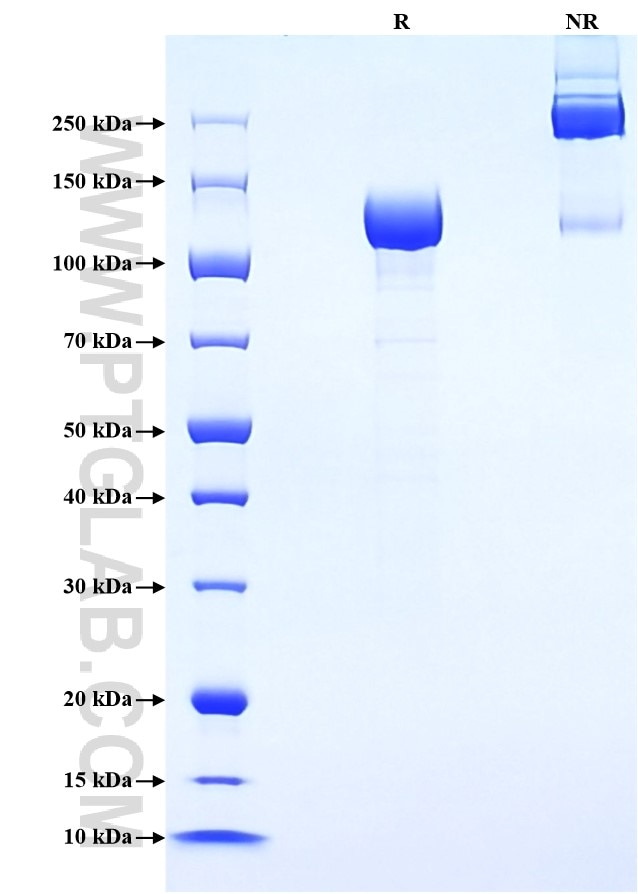Recombinant Human Tie2 protein (rFc Tag)
Species
Human
Purity
>90 %, SDS-PAGE
Tag
rFc Tag
Activity
not tested
Cat no : Eg3367
Validation Data Gallery
Product Information
| Purity | >90 %, SDS-PAGE |
| Endotoxin | <0.1 EU/μg protein, LAL method |
| Activity |
Not tested |
| Expression | HEK293-derived Human Tie2 protein Ala23-Leu748 (Accession# Q02763-1) with a rabbit IgG Fc tag at the C-terminus. |
| GeneID | 7010 |
| Accession | Q02763-1 |
| PredictedSize | 107.3 kDa |
| SDS-PAGE | 110-140 kDa, reducing (R) conditions |
| Formulation | Lyophilized from 0.22 μm filtered solution in PBS, pH 7.4. Normally 5% trehalose and 5% mannitol are added as protectants before lyophilization. |
| Reconstitution | Briefly centrifuge the tube before opening. Reconstitute at 0.1-0.5 mg/mL in sterile water. |
| Storage Conditions |
It is recommended that the protein be aliquoted for optimal storage. Avoid repeated freeze-thaw cycles.
|
| Shipping | The product is shipped at ambient temperature. Upon receipt, store it immediately at the recommended temperature. |
Background
Tie2 (also known as TEK) is a tyrosine-protein kinase expressed almost exclusively on endothelial cells. It contains two immunoglobulin-like domains, three epidermal growth factor (EGF)-like domains and three fibronectin type III repeats. Tie2 acts as cell-surface receptor for ANGPT1, ANGPT2 and ANGPT4 and regulates angiogenesis, endothelial cell survival, proliferation, migration, adhesion and cell spreading, reorganization of the actin cytoskeleton, but also maintenance of vascular quiescence. Mutations in the gene of Tie2 are associated with inherited venous malformations of the skin and mucous membranes. Tie2 can also exist as a soluble form (sTie2) which is released from endothelial cells and present in human blood. The concentration of sTie2 is increased in a range of diseases, including peripheral arterial disease and myocardial infarction.
References:
1. Davis S. et al. (1996). Cell. 87(7):1161-1169. 2. Reusch P. et al. (2001). Angiogenesis. 4(2):123-131. 4. Nätynki M. et al. (2015). Hum Mol Genet. 24(22):6374-6389. 5. Alawo DOA. et al. (2017). Sci Rep. 7(1):3658.
